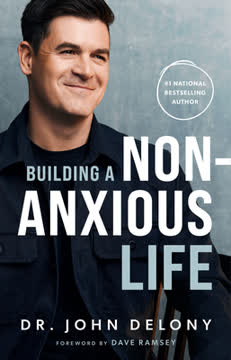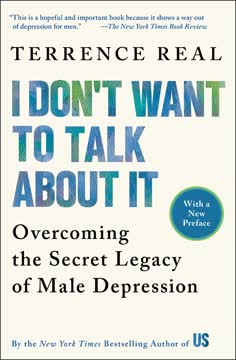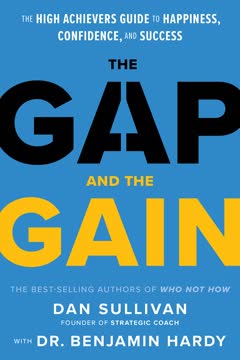Key Takeaways
1. Halftime: A Pivotal Transition from Success to Significance
"If the first half was a quest for success, the second half is a journey to significance."
Redefining life's purpose. Halftime marks a crucial transition in life, typically occurring in one's forties or fifties. It's a time when individuals, having achieved a measure of success, begin to yearn for something more meaningful. This phase is characterized by a shift from external achievements to internal fulfillment.
Signs of halftime:
- Diminishing thrill from career accomplishments
- Increased interest in mentoring rather than competing
- Frequent thoughts about career changes or "downsizing" life
- Growing dissatisfaction with materialistic pursuits
- Desire to make a lasting impact beyond personal success
The halftime concept encourages individuals to view the second half of life not as a decline, but as an opportunity for personal renaissance and greater contribution to society. It's about leveraging accumulated skills, resources, and wisdom to pursue significance and leave a lasting legacy.
2. Identifying Your "One Thing" for a Purposeful Second Half
"Do you understand the difference between being called and being driven?"
Discovering core purpose. The key to a fulfilling second half is identifying your "one thing" - the central passion or purpose that will drive your life forward. This process involves deep self-reflection and often requires stepping back from the busyness of life to listen to your inner voice.
Steps to find your "one thing":
- Reflect on what truly energizes and fulfills you
- Identify your unique skills and experiences
- Consider the needs in the world that resonate with you
- Align your passions with opportunities to serve others
- Seek input from trusted friends and advisors
Finding your "one thing" is not about choosing between faith and career, but about integrating your beliefs, talents, and experiences into a cohesive mission. It's about moving from being driven by external measures of success to being called by a deeper sense of purpose.
3. Creating Capacity for Your Second-Half Mission
"Unless a person takes charge of them, both work and free time are likely to be disappointing."
Reclaiming control. To pursue a significant second half, it's crucial to create capacity in your life. This often involves deliberately cutting back on commitments, possessions, and activities that no longer align with your core purpose.
Strategies for creating capacity:
- Delegate non-essential tasks at work and home
- Focus on your strengths and unique contributions
- Learn to say no to commitments that don't align with your mission
- Set clear boundaries on your time and energy
- Simplify your lifestyle and possessions
Creating capacity is not about working less, but about working smarter and more purposefully. It's about making intentional choices that allow you to invest your best energy into pursuits that truly matter to you and contribute to your larger mission.
4. Embracing Healthy Individualism in Your Second Act
"In Christ's church, individualism is amplified, encouraged, supported, and complemented."
Balancing self and community. Healthy individualism in the second half means embracing your unique gifts and calling while recognizing your interconnectedness with others. It's about moving from a small, self-centered focus to a larger self that finds fulfillment in contributing to something greater.
Characteristics of healthy individualism:
- Recognizing and developing your unique talents
- Using your strengths to serve others and contribute to community
- Balancing personal growth with commitment to relationships
- Finding joy in helping others while also benefiting personally
- Embracing interdependence rather than isolation or dependence
The second half of life offers an opportunity to integrate faith, work, and service in a way that expresses your authentic self while making a meaningful impact on others. It's about finding your place in the larger tapestry of life and community.
5. Lifelong Learning as a Catalyst for Significance
"You only really learn what you need and are willing to act on; the rest is amusement and passing the time away."
Continuous growth mindset. Lifelong learning is essential for a significant second half. It keeps you mentally sharp, adaptable, and equipped to make meaningful contributions in a rapidly changing world.
Approaches to lifelong learning:
- Formal education: Taking courses or pursuing degrees
- Self-directed learning: Reading, researching, and exploring new topics
- Experiential learning: Trying new activities and roles
- Collaborative learning: Engaging in discussions and group projects
- Reflective learning: Journaling and meditating on experiences
Effective learning in the second half is focused on acquiring knowledge and skills that directly support your mission and purpose. It's about staying curious, open to new ideas, and willing to challenge your assumptions. This continuous growth not only enhances your ability to contribute but also keeps life exciting and fulfilling.
6. Overcoming Financial Barriers to Halftime
"You do not have to be wealthy to have a significant second half."
Creative solutions. While financial security can provide more options, it's not a prerequisite for a meaningful second half. Many individuals find ways to pursue significance while maintaining financial stability.
Strategies for balancing finances and significance:
- Gradually transition to part-time work in your current field
- Develop a "parallel career" that aligns with your mission
- Negotiate flexible work arrangements with your employer
- Simplify your lifestyle to reduce financial needs
- Explore volunteer or low-cost ways to pursue your mission
- Consider entrepreneurial ventures that combine purpose and income
The key is to start where you are with what you have. Often, the skills and connections developed in your first half can be leveraged in new ways to support your second-half mission. Creative thinking and willingness to take calculated risks can open up unexpected opportunities for significance.
7. The 50/50 Proposition: Balancing Self and Service
"My prayer for you is that you will have the courage to live the dreams that God has placed within you."
Integrated living. The 50/50 proposition challenges individuals to allocate half of their resources - time, talent, and treasure - to serving others and their community. This balanced approach leads to a more integrated and fulfilling life.
Benefits of the 50/50 approach:
- Greater sense of purpose and fulfillment
- Improved mental and emotional well-being
- Stronger connections within community
- Tangible positive impact on others' lives
- Personal growth through new challenges and experiences
The 50/50 proposition is not about rigid rules, but about cultivating a mindset that values both personal well-being and social responsibility. It's a way of living that recognizes the interconnectedness of all aspects of life and seeks to make a positive difference in the world while also nurturing oneself. This balanced approach can lead to a truly significant and satisfying second half of life.
Last updated:
FAQ
What's "Halftime: Changing Your Game Plan from Success to Significance" about?
- Transition from Success to Significance: The book explores the concept of "halftime," a period in life where individuals transition from seeking success to seeking significance.
- Personal Growth and Reflection: It encourages readers to reflect on their first half of life and consider how they can make the second half more meaningful.
- Practical Guidance: The author, Bob Buford, provides practical advice and strategies for making this transition, drawing from his own experiences and those of others.
- Spiritual and Personal Fulfillment: The book emphasizes the importance of aligning one's life with personal values and spiritual beliefs to achieve fulfillment.
Why should I read "Halftime: Changing Your Game Plan from Success to Significance"?
- Midlife Reflection: If you're at a point in life where you're questioning the meaning of your achievements and seeking deeper fulfillment, this book offers valuable insights.
- Actionable Advice: It provides practical steps and exercises to help you plan and execute a transition to a more significant life.
- Inspiring Stories: The book includes stories of individuals who have successfully made the transition, offering inspiration and motivation.
- Spiritual Perspective: For those interested in integrating their faith into their life mission, the book offers a Christian perspective on finding purpose.
What are the key takeaways of "Halftime: Changing Your Game Plan from Success to Significance"?
- Identify Your "One Thing": Discover what truly matters to you and focus your efforts on that.
- Shift from Success to Significance: Move beyond material success to make a meaningful impact in the world.
- Create a Life Mission: Develop a personal mission statement that aligns with your values and passions.
- Embrace Lifelong Learning: Continue to grow and learn in the second half of life to stay engaged and fulfilled.
How does Bob Buford define "halftime" in the book?
- Midlife Transition: Halftime is described as a period of reflection and reassessment that typically occurs in midlife.
- Opportunity for Change: It is seen as an opportunity to change one's life direction from success-driven to significance-driven.
- Time for Reflection: Halftime involves taking stock of one's life, achievements, and future aspirations.
- Focus on Significance: The goal is to find ways to contribute to the world in a meaningful way.
What practical advice does Bob Buford offer for transitioning to a life of significance?
- Conduct a Personal Inventory: Reflect on your skills, passions, and what you want to achieve in the second half of life.
- Develop a Mission Statement: Create a clear and concise statement that outlines your purpose and goals.
- Engage in Seismic Testing: Experiment with different roles and activities to find what aligns with your mission.
- Seek Guidance and Support: Surround yourself with mentors and a supportive community to help navigate the transition.
What role does faith play in "Halftime: Changing Your Game Plan from Success to Significance"?
- Central to the Transition: Faith is presented as a central component in finding significance and purpose.
- Aligning with Beliefs: The book encourages aligning one's life mission with spiritual beliefs and values.
- Faith as a Guide: Faith is seen as a guiding force in making decisions and finding fulfillment.
- Community and Service: The book emphasizes the importance of serving others and being part of a faith community.
What are some of the best quotes from "Halftime: Changing Your Game Plan from Success to Significance" and what do they mean?
- "The game is won or lost in the second half, not the first." This quote emphasizes the importance of the second half of life in determining one's legacy and impact.
- "What will you do about what you believe?" It challenges readers to take action based on their beliefs and values.
- "Faith without works dies." This highlights the necessity of translating faith into meaningful actions.
- "Success panic" refers to the realization that success alone is not fulfilling, prompting a search for significance.
How does Bob Buford suggest dealing with the fear of change during halftime?
- Acknowledge the Fear: Recognize that fear is a natural part of the transition process.
- Take Small Steps: Start with small, manageable changes to build confidence and momentum.
- Seek Support: Lean on mentors, friends, and family for encouragement and guidance.
- Focus on the Benefits: Keep the potential rewards of a more fulfilling life in mind to motivate yourself through the fear.
What is the significance of the "one thing" concept in the book?
- Core Focus: The "one thing" represents the core passion or purpose that should guide your actions and decisions.
- Simplifies Decision-Making: By identifying your "one thing," you can simplify your life and focus on what truly matters.
- Aligns with Values: It ensures that your efforts are aligned with your personal values and beliefs.
- Drives Fulfillment: Pursuing your "one thing" leads to a more fulfilling and meaningful life.
How does "Halftime: Changing Your Game Plan from Success to Significance" address the concept of work-life balance?
- Reevaluate Priorities: Encourages readers to reassess their priorities and make time for what truly matters.
- Integrate Work and Life: Suggests finding ways to integrate personal values and passions into your work.
- Set Boundaries: Advises setting boundaries to ensure that work does not overshadow other important aspects of life.
- Pursue Meaningful Work: Emphasizes the importance of finding work that aligns with your mission and contributes to a balanced life.
What are some common obstacles people face when transitioning to a life of significance, according to Bob Buford?
- Fear of the Unknown: Uncertainty about the future can be a significant barrier.
- Financial Concerns: Worries about financial stability can hinder the transition.
- Lack of Clarity: Not having a clear vision or mission can make it difficult to move forward.
- Resistance to Change: Comfort with the status quo can prevent individuals from pursuing a more meaningful life.
How can someone start their halftime journey according to "Halftime: Changing Your Game Plan from Success to Significance"?
- Reflect on Your Life: Begin by reflecting on your achievements, values, and what you want to accomplish.
- Identify Your Passions: Determine what you are passionate about and how you can incorporate that into your life.
- Create a Plan: Develop a strategic plan that outlines the steps you need to take to transition to a life of significance.
- Take Action: Start taking small, deliberate actions towards your new goals and adjust as needed.
Review Summary
Halftime receives mixed reviews, with an average rating of 3.89 out of 5. Many readers find its message about transitioning to a more meaningful second half of life inspiring, especially for those in their 40s and 50s. The book's Christian perspective resonates with some but alienates others. Critics note its focus on wealthy, successful individuals and repetitive content. Some appreciate Buford's practical advice and thought-provoking questions, while others find it lacking substance. Overall, readers value the concept of moving from success to significance but have varying opinions on its execution.
Similar Books









Download PDF
Download EPUB
.epub digital book format is ideal for reading ebooks on phones, tablets, and e-readers.





